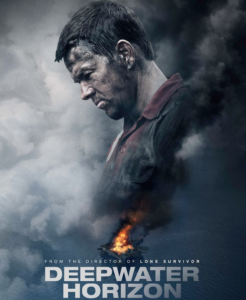What we learned about quality from scenes in movie Deepwater Horizon
I’ll still write blogs here. Here’s the article text as it is on LinkedIn.
Viewpoints regarding the factuality of the Deepwater Horizon adaptation aside, assessing the tragic 2010 oil spill, which claimed 11 lives and has lasting environment impacts, makes for an intriguing QA case study.
Relentlessly stick to your core values
I lead a team of Software Engineers in Test at MapR. To reunite with the core values and integrity that is required to ensure quality, we did something different in our most recent meeting. Rather than go over schedules, cool things we’re building, or tradeoffs with particular design patterns in our approach, we self chartered a quality case study of the tragic 2010 oil spill chronicled in the movie Deepwater Horizon. This involved watching scene snippets and steering an open-ended discussion after each scene.
Clear Communication is key
The film is ripe, even juicy, with concepts that will tickle a quality oriented engineer from a non-technical standpoint. These are people issues and pressures, which can be tougher to navigate for someone who really values hard-core technical skills.
Corporate villainy, the pressures of schedule and deadline misses, cost cutting, subversive fear tactics, and omissions of truth both wreak and linger in the film. Some subtle, some very subtle, others not so much.
Procedural concepts like integration testing, negative testing, and questionable test results add to the film’s legitimacy from a quality engineering standpoint.
“Hope is not a tactic”.
It was interesting to hear some team members really internalize the struggle and pressures that come from ensuring quality while not killing the buzz and camaraderie of the entire project.
Others were quick to discount the entire movie, because the process followed by the teams in Deepwater Horizon was deeply flawed and lacking any engineering discipline… Where were the checklists, where was the acceptance criteria, what was the fallback plan for having questionable test results, where was the accountability matrix!?
Listen all the time and leverage your experience
My take-away… In the absence of checklists and acceptance criteria, rely on your listening skills and on your experience. Listen to that which is unsaid or omitted. Your experience will help you detect failure before it occurs. This usually takes no shape; rather, it is unstructured and may come to you in the form of a bad feeling or gut reaction to something omitted. Listen to your twinge, then act on it.
If you’d like to run a case study with your team using the movie, I’m including the order of scenes we watched & discussed:
Set the context…
Deepwater Horizon, a semi-submersible oil drilling rig floating 5,200 feet over the gulf floor, 42 miles off the Louisiana coast, experiences blasts and explosions causing a massive oil spill. 128 crew members on board. 11 members died and millions of gallons of oil spilt across the Gulf of Mexico, BP settlement punishment of $21 billion. Environmental impact, impact to human life, and a real financial and PR impact to a corporation.
Scenes:
1:21:20 -> 1:22:00 Emergency
(havoc, emergency, devastation, fire, evacuating on rafts).
No discussion here necessary. Just setting the brevity of the situation, starting with the devastation and tragic impact first. This sets the tone for the team to start looking for cues early on during our review of the scenes and eventual discussion of course correction.
15:37 -> 17:20 Crew Arrives
(The Transocean rig operating crew arrives on a helicopter and finds out that BP tells the test team to go home. Hard for the team to hear what’s going on because of the helicopter noise. Commotion about Schlumberger team not running some cement test. Cement was put in by Haliburton)
Ask the team for open-ended thoughts and feedback.
28:10 -> 31:45 Confrontation
(The Transocean rig manager confronts and berates BP for not performing the cement bond test. In its stead, he mandates that a negative pressure test be performed as a substitute test.)
Ask the team for open-ended thoughts and feedback.
33:00 -> 35:07 Side Conversation
(BP exec played by John Malkovich bypasses the chain of command and talks big picture with Transocean crew member. Crew member tells him a story about fishing, sticking his hand down a hole but plans for getting bitten, not hoping. Hope is not a tactic)
Ask the team for open-ended thoughts and feedback.
35:30 -> 47:40 The Test
(Test is inconclusive. Followed by a whiteboard session regarding technical nuanced details of a bladder effect, to which one engineer says it’s a little above his pay grade. Conversations floating around regarding test inconsistency due to potential problem with drill pipe or sensor giving a false reading or any other of 1000 parts moving down there)
Ask the team thought for open-ended thoughts and feedback.
1:24:20 -> 1:28:00 Hero
Ask the team thought for open-ended thoughts and feedback regarding teamwork or lack thereof in this scene.
—
Relentlessly stick to your core values, Clear Communication is key, hope is not a tactic, listen all the time and leverage your experience




Your ability to lead, and your skills in analyzing and viewing things are very impressive. This is a great article and your conclusion was the best part.
very thoughtful of you – thank you!